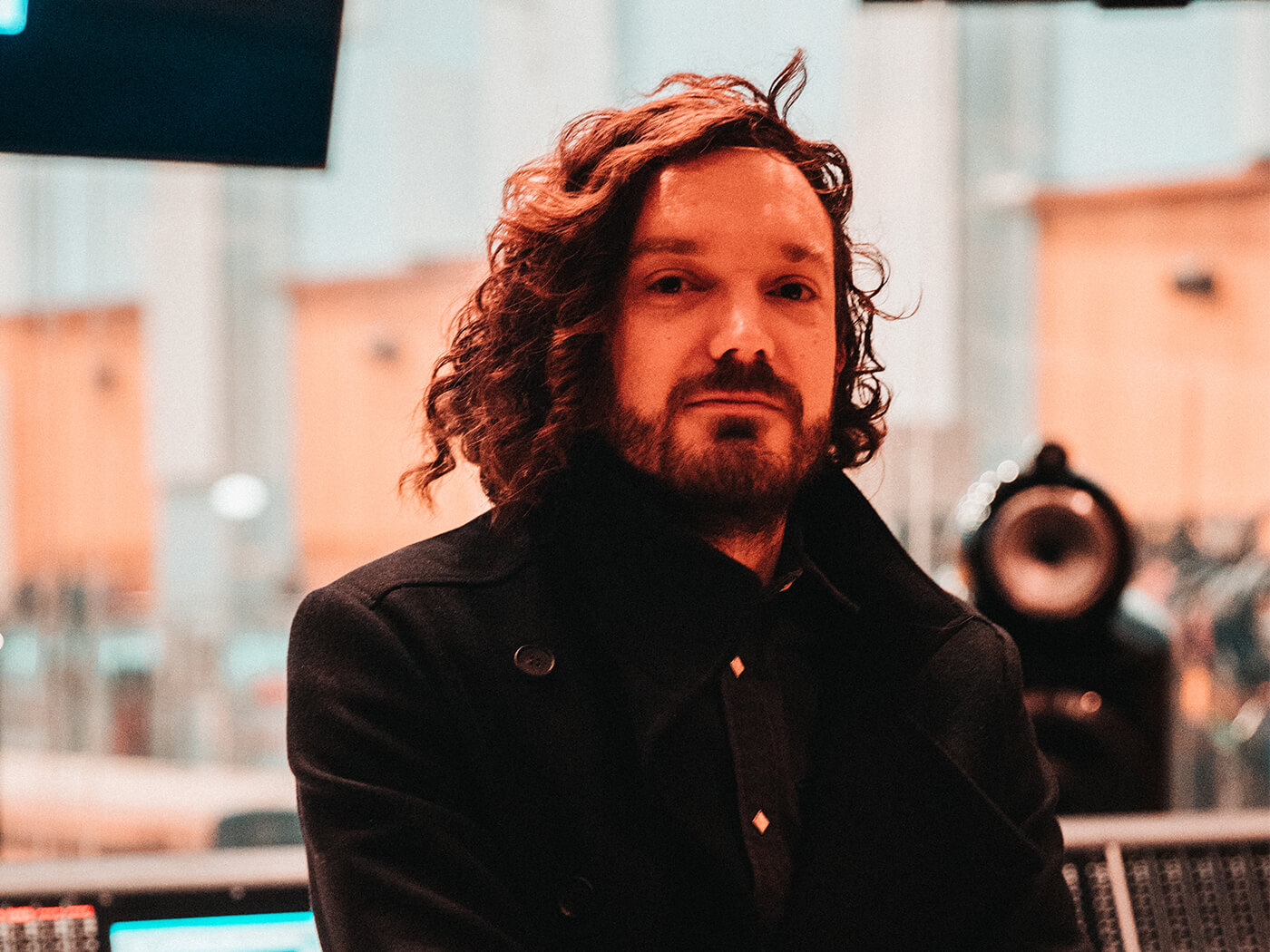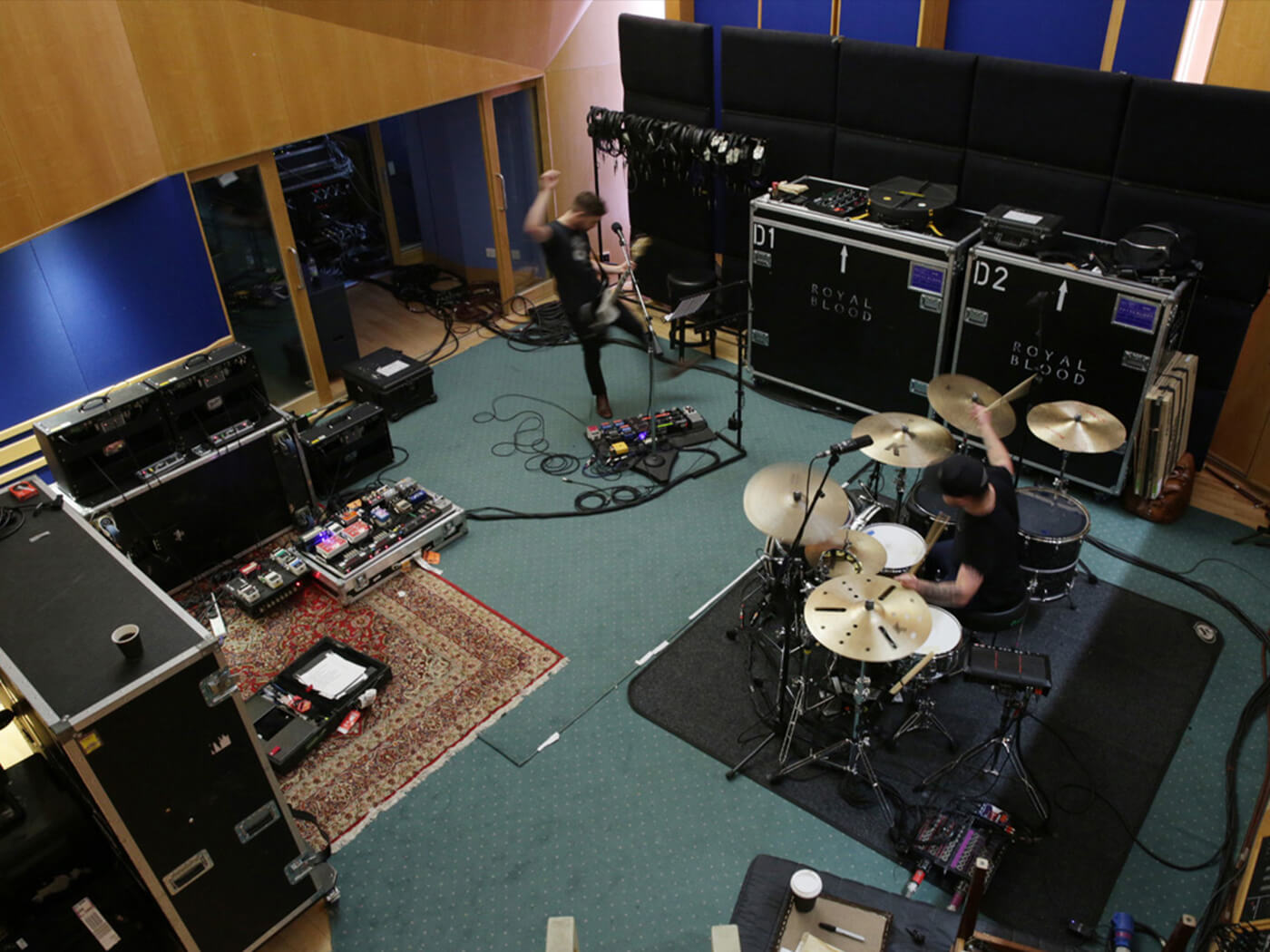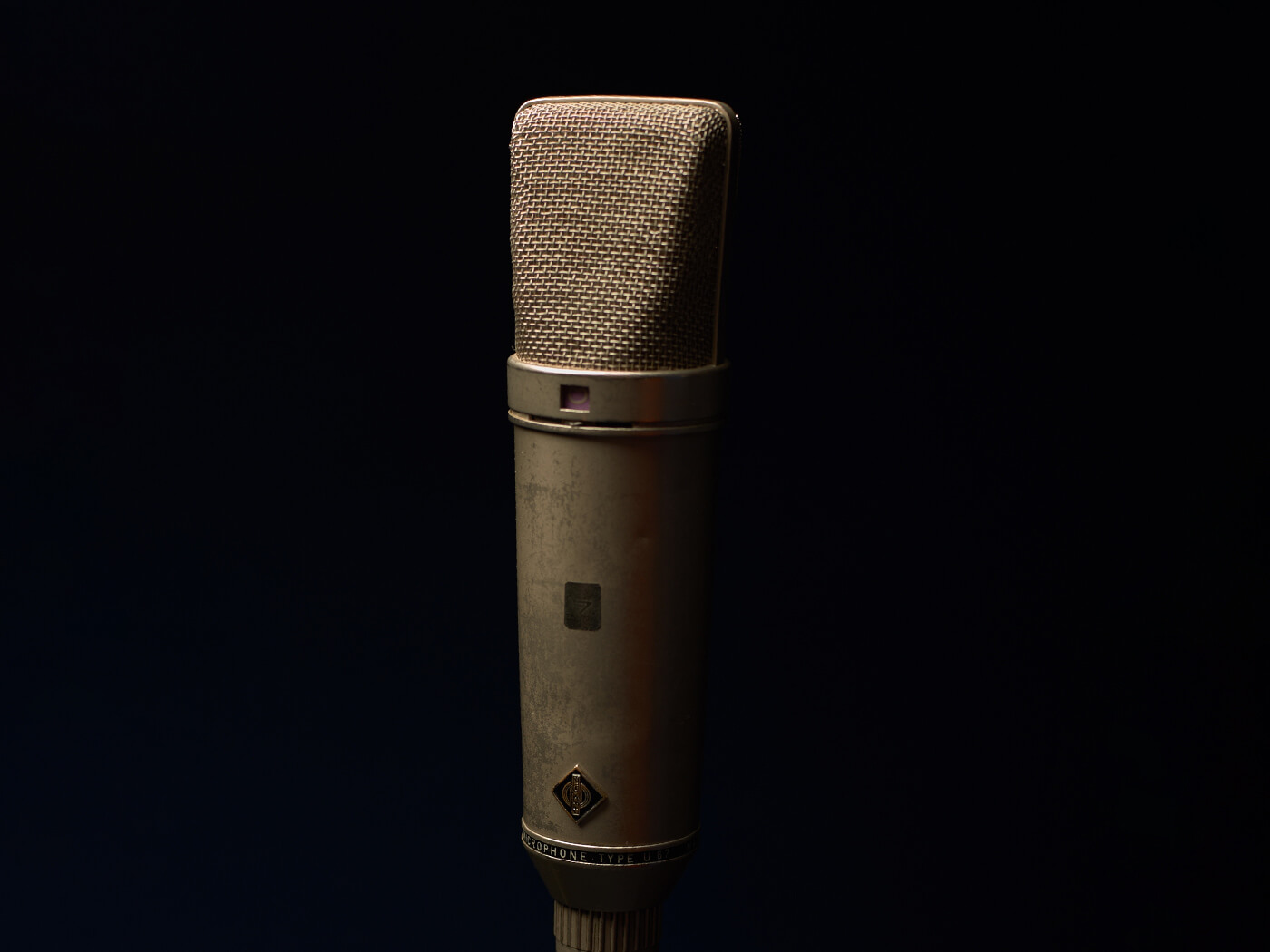Ask Abbey Road: Engineer John Barrett on vocal mics, pet peeves and finishing a mix
In this instalment, Abbey Road engineer John Barrett answers your questions about in-the-box mixes, the analogue mindset and common problems that he encounters in the studio.

This is the second of a three-part interview with Abbey Road engineer John Barrett. The first part focused on how the Avengers: Endgame soundtrack was recorded at the studios.
John has been at the legendary studios for 14 years and shares some of his advice on production.
If you have questions for the Abbey Road team, ask now in our open q&a. Taking your questions now is Recordist Matt Jones.
Paul: How do you approach in-the-box mixes? It feels like early on, more subtle elements can disappear.
John Barrett: I don’t think there’s any technical reason why that would happen. The main difference between in-the-box mixing and working on an analogue console is the way you start and approach the mix. When you’re on faders, it seems far more tactile and you’re more likely to do things intuitively.
I remember when I started doing my mixes in the box, I was a lot more reluctant to be radical early on. You can start looking at EQ curves rather than just feeling it. I think that if you can approach an in-the-box mix as you would mixing on an analogue console, you’re going to get a decent balance straight away.
The other thing about in-the-box mixing is that you can spend hours stuck thinking about which plug-ins to use. If you’re mixing on a console, you’d probably just put an EQ on and immediately start playing and making progress.
Once you’ve figured out headroom and static levels, the control that you get from having an in-the-box mix means that you can do a better job, dare I say, than on an analogue console. You can tweak to your heart’s content. That can be a blessing and a curse.
MT: Is there a point at which you can say “this mix is finished” and how do you decide when that is?
JB: I don’t think I’ve ever really finished a mix. I’ve just run out of time! I’m saying that to make a point, but it’s one of those things where you can go down a rabbit hole. However, there’s usually a moment when it all falls into place and you feel happy with the mix.
The other great thing about in-the-box mixing is that you can come back to it at a later stage with a clearer head and revise things that you may have missed. With an old-school analogue mix, you rarely have the time to go back and recall it, so it means that you’re committed – which is a good thing – but it also means you don’t get that flexibility to come back at a later stage with fresh ears.
“The most powerful tool in the mixer is the fader”
We know that fresh ears are among your best friends. You can be mixing away for hours and you walk out of the room for 20 minutes and get a coffee. Then, when you come back, you do the most productive hour of the mix, because you have a new perspective.
The other thing is that when you’re mixing on a console, you tend not to solo things as much as you do in the box. I don’t know why that would be, but that’s a real danger, to solo things. You can get your drums sounding great in solo, then you put the bass in and it competes.
Getting a static balance and trying to approach it more like an analogue mix is crucial. Maybe you could start by putting a channel strip plug-in on every single channel and setting up your DAW like a console. Then set up a few utility reverbs and delays rather than putting a reverb plug-in on each track. It’s all about approach.
I’ve been fortunate because I started off working in the box and then came to Abbey Road and got my hands on a desk and enjoyed doing that. Then I’ve gone back and it means that I can get those colours that I would do on an analogue desk, but in the box. You can hybridise your workflow and start thinking of it more as if it was a desk mix.
MT: How do you transfer the analogue mindset into the digital domain?
JB: I don’t necessarily think the analogue approach is all about sonics; it’s more the tactile approach. It’s more about getting in and moving faders. If you’re on a console, the likelihood is you might spend 20 minutes trying to play around with a few things, changing levels on faders, then decide it’s all rubbish. You pull all the faders down and start again. For whatever reason, in the box, I feel I’m a bit more reluctant to do that. You can back yourself into a corner quickly.
If something’s not working, sometimes the best solution is to change the level. The most powerful tool in the mixer is the fader, but with all these clever tools you can easily decide to EQ until a track pokes out a bit more, when the real issue is that something else in your mix is too loud.

Catherine: What is the most common problem that you come across when you record an artist?
JB: Something that’s a real bugbear of mine is guitars. It always makes me feel slightly nervous when a guitarist starts changing strings just as you’re about to record.
I’m a recovering guitarist. I was into guitar worship for years before I started playing around with faders and microphones. I always think you should bed your strings in before you come into a recording session. So, change the strings a couple of days before to give them a chance to settle in. Otherwise, you’ll have to sit there tuning up after every take.
More significant is dealing with peoples’ nerves. It can be a bit overwhelming sometimes coming here and recording at Abbey Road. You get two kinds of people: you get those who rise to the challenge and embrace it, and those people who get a bit overwhelmed.
It’s essential to create a comfortable environment that’s calm and relaxed. And, if things go wrong, it’s up to you to reassure people that it will all be okay – to take a breath, to take five minutes. The number of times when you’re recording a vocal, I genuinely believe that there’s a strange phenomenon that if you haven’t got a vocal within the first five or six takes, it’s going to be 30 takes.
Naturally, this isn’t set in stone, but there’s something psychologically where you either do a few takes or do loads of takes. There can be many takes in the middle that aren’t great because the performer is overthinking it, or getting stressed about it. Alternatively, sometimes there’s a certain magic that’s been lost. By the time you’ve got round to take 30, hopefully, some of that has come back again.
“Ultimately, it’s meant to be fun.”
Or you could take a break. A favourite of mine, especially with singers, is to get them in to do a couple of warm-up takes and then go and get a cup of tea with them. Because by that point, they’ve settled into the headphones and the mic, and they’ve got their initial nervous energy out. They calm down, you go and have a chat with them by the coffee machine.
Then you go back and record the vocals and it seems to work. Sometimes, people want to carry on and you can see that it’s a stumbling block. That’s when it’s time to say: “Let’s just take five minutes and it will be okay.”
The psychology of it is the thing. Taking a break is sometimes the best course of action. Guiding people through that is one of the most common problems that you face. Navigating your way through something that might seem quite daunting at first, but ultimately, it’s meant to be fun.
MT: Is there anything else musicians should know not to do in the studio?
JB: It’s always good to bring all of your gear with you. That’s a classic. I’ve been asked several times whether I have a plectrum or a pair of drumsticks. The other thing that’s quite a problem with guitars is noisy pedals or power supplies. If you can avoid any of that stuff, you’re onto an absolute winner. If you can get a nice little rig put together that just works where you just plug in and play, you’ll look a total pro. The only reason I’m bashing guitarists is that I used to be one and I’m slightly jealous!
Preparation is crucial, too. If you can turn up to a studio knowing the song, knowing the parts and having an arrangement, that’s going to pay dividends when you record. Of course, people get creative and go off on a tangent in the studio, but there’s a lot to be said for pre-production and being prepared. I think that’s invaluable. If you can turn up and it’s all ready to go, then everyone’s going to have a more enjoyable time. And you’ll get through stuff really quickly.
By contrast, if you turn up to a recording session and have no idea about the song, the parts, the structure or the key, it’s going to be less enjoyable for all involved. I like people being prepared, having a vision and knowing what they want.

Harriet: What is your favourite microphone for recording vocals?
JB: Again, this is about being prepared. Generally – and this is going to make me sound like a total charlatan – but the one that’s plugged in and working is a good place to start. As much as I’d say: “I’d love to use mic X,” if it’s not set up, and somebody wants to record the vocal quickly, there’s mileage in not being too precious about saying it has to be a specific microphone. So that’s my mantra: the one that’s plugged in and working is generally a good place to start.
That sounds a bit flippant, though. We’re lucky at Abbey Road because we’ve got the best choice of mics in the world. And we have a full-time guy called Lester Smith who looks after all of our mics for us. We are in a very privileged position. I’ve been through the locker and I’ve played with many different mics, so it would be quite uncommon to have a vocal recording session here without having a U 47 or U 67 up. Having said that, sometimes an SM7 works well. Sometimes a Sennheiser MD 441 works really well. Sometimes an SM58 is all you need.
The mic that’s plugged in and working is a good place to start
It ultimately depends on the purpose. I’ve recorded excellent-sounding vocals on an SM7, but I’ve also recorded bad vocals on a U 47. It’s not as crucial as people think.
If I were in a situation where I had to get one mic, I’d try and get a utility mic that would cover all bases. Even if you’re just recording vocals, you’d want something you could also record a tambourine, acoustic guitar or bass with, too.
I think there are so many great mics out there, for a very reasonable amount of money, the quality of the mic is not going to be a limiting factor like it would have been 20 years ago.
Philip: Do you have any tips for creating definition between parts in a synth-heavy pop mix?
JB: You shouldn’t feel scared of being bold. If you’ve got lots of elements trying to occupy the same sonic space, ask yourself whether they all need to be there.
Maybe the reason you’re struggling with the definition between some synth sounds versus others is that they’re not necessarily the right sounds. Or perhaps it’s the wrong arrangement. Sometimes in those scenarios, you have to choose which is the most important sound. As I’ve said, the best tool you have at your disposal is the fader. So, turn something up or turn something down.
You can sometimes quite savagely filter the top end on certain sounds or the low end on others. You can play around with stereo enhancement, you can put ambience on things to put them in different perspectives and spaces. But there’s a lot to be said for just choosing another sound.
I remember seeing a trick on (YouTube channel) Pensado’s Place where you take the whole mix, filter off all the top end and listen to what’s happening in the low end. Then, you do the same for the high end. You see what’s going on there – and listen to what’s going on in each band. When I first played around with that for pop music, it absolutely blew my mind. Immediately, you can go in and hear what’s competing, what’s occupying a space that it shouldn’t be, what’s overwhelming something else. Little things like that are handy when you’re dealing with lots of synth elements. That sort of approach is beneficial.
It’s a great show, and some of what he does is subtle, but it all counts towards the bigger picture. Lots of little subtle changes can make an enormous difference to a mix.
Have a burning question about recording? Ask Recordist Matt Jones in our next open Q&A. Get yours in by 12 August 2019.